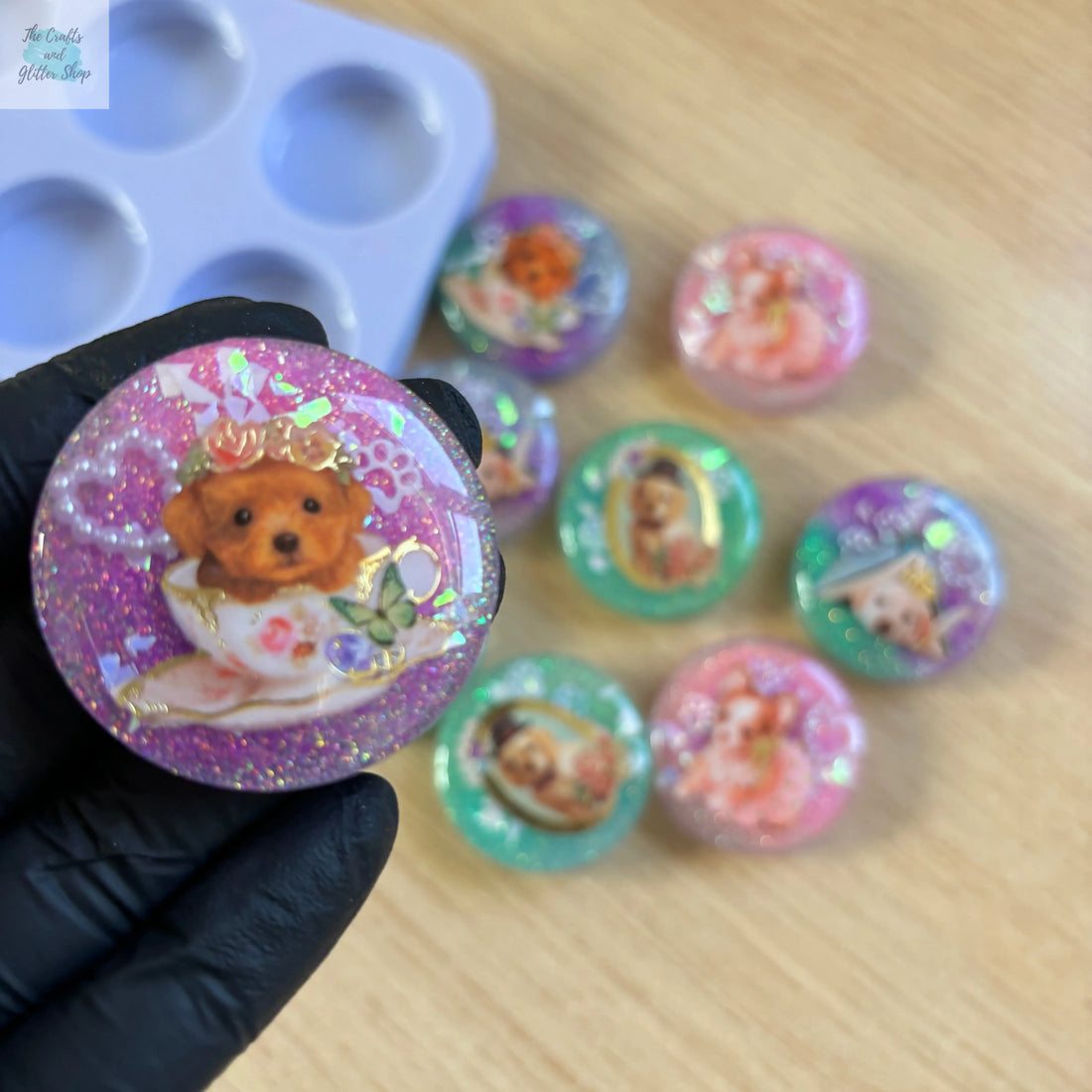
How to Prevent Bubbles When Embedding Stickers in Resin
Share
Mastering Resin Art: How to Prevent Bubbles When Embedding Stickers
Resin art offers endless possibilities for creative projects, from jewelry-making to home décor. However, one of the most common issues resin artists face—especially when embedding stickers—is dealing with air bubbles. These pesky little imperfections can ruin the clarity of your resin, diminish the visual appeal of embedded stickers, and compromise the final look of your piece. Luckily, with a few tips and techniques, you can achieve bubble-free results every time.
In this article, we'll dive deep into how to avoid bubbles in resin, especially when embedding stickers, ensuring your creations come out crystal clear and professional.
Why Do Bubbles Form in Resin?
Before we explore prevention strategies, it's important to understand why bubbles form in resin. When you mix resin and hardener, the chemical reaction creates heat, which can cause air to get trapped within the mixture. This air tries to escape as bubbles, which, if not properly addressed, can become stuck within the resin or around embedded items, like stickers.
Several factors contribute to bubble formation:
- Over-mixing the resin, which introduces more air
- Room temperature whether it's too cold or too hot
- Porous materials or objects that trap or introduce air into your resin
- Moisture in the workspace or materials
By managing these factors, you can greatly reduce the chances of bubbles forming in your resin art.
Tips to Avoid Bubbles in Resin When Embedding Stickers
To achieve a flawless resin finish with embedded stickers, you need to pay attention to both your resin preparation and the placement of the stickers. Follow these tried-and-true techniques to minimize bubbles in your resin projects.
1. Choose the Right Resin
Not all resins are created equal. Some resins are designed specifically for deep casting or pouring, while others are formulated for surface coatings. Opt for a low-viscosity epoxy resin for projects that involve embedding stickers. Low-viscosity resin flows more smoothly, allowing trapped air to escape more easily.
2. Prepare Your Stickers
Preparing your stickers properly is crucial to preventing bubbles. Since stickers are often made from porous or paper-based materials, they can trap air or absorb moisture. Here’s how to prepare them:
- Seal your stickers: Apply a thin layer of clear drying glue, Mod Podge, or an acrylic spray sealer on both sides of the sticker. This prevents the sticker from absorbing moisture and trapping air.
- Cut close to the edges: If you're cutting out stickers, trim as close as possible to the edges. This reduces the surface area where bubbles can become trapped.
3. Work in a Temperature-Controlled Environment
Temperature plays a significant role in how your resin behaves. Ideally, the workspace should be at a temperature of 70-75°F (21-24°C). If it's too cold, the resin will become thicker, trapping more air. Too hot, and the resin may cure too quickly, not allowing bubbles to escape.
For a deep-dive into how weather and temperatures affect resin refer to the following articles:
4. Mix Your Resin Slowly
When mixing your resin and hardener, it’s crucial to avoid creating excess air. Here are some key tips:
- Stir slowly: Avoid whipping or vigorous stirring, as this introduces more air bubbles into the mixture. Use slow, steady movements to mix.
- Use a clean mixing tool: Any residue or dust on your tool can trap air, so ensure it’s clean and smooth.
- Let it sit: After mixing, let the resin sit for 5-10 minutes to allow bubbles to rise to the surface before pouring. However, be mindful of the working time specified by your resin product—this is the amount of time you have before it begins to cure. Don’t let it sit too long, or it may start to harden before you pour.
5. Warm the Resin
If your room temperature is too cold, gently warming the resin before mixing can help reduce its viscosity and allow air bubbles to escape more easily. You can do this by placing the resin bottle in a warm water bath for 5-10 minutes. Just be careful not to overheat it, as this could accelerate the curing process.
6. Use a Heat Gun or Torch
Once you've poured your resin and embedded your sticker, air bubbles may still appear on the surface. To remove these, use a heat gun or torch to pass over the resin’s surface lightly. The heat will force the bubbles to rise and pop.
Important Tips:
-
Do not hold the heat source too close or in one spot for too long, as this can burn the resin or cause uneven curing.
-
Always work in a well-ventilated area, wear protective gear (gloves, goggles, and mask), and keep flammable materials away.
-
If you're under 18, adult supervision is required.
-
If this is your first time using this technique, always practice on a test piece before applying it to your final project to avoid mistakes and get familiar with the process.
7. Embed Stickers Carefully
Proper sticker placement can prevent bubbles from forming around or under your sticker:
- Pre-coat the sticker: Apply a thin layer of resin to the surface where the sticker will be placed. Use a toothpick or a silicone tool to press the sticker down gently. This helps to push out any trapped air beneath the sticker.
- Apply resin in layers: If you’re working on a project with multiple layers, embed the sticker in one thin layer and let it cure before adding the next layer of resin. This step-by-step process prevents bubbles from forming around the sticker and helps achieve a smoother finish. Using a thin layer—just enough to embed the sticker—also helps control the placement and minimizes the risk of the sticker shifting or floating.
8. Cure Slowly
Rushing the curing process can cause bubbles to get trapped. Always follow the manufacturer’s instructions for the resin’s curing time. Some resins require a slower cure to allow trapped air to escape fully. Be patient, and give your project the time it needs.
9. Vacuum Chamber for Bubble Removal
For those who work on a larger scale or who want the most professional results, consider investing in a vacuum chamber. This piece of equipment removes air bubbles from resin before it’s poured. While this might not be necessary for smaller projects, it’s a great option for resin artists looking to ensure flawless results.
Common Mistakes to Avoid
Here are a few things to steer clear of when working with resin and embedded stickers:
- Skipping the sealing step: Not sealing your stickers can result in bubbling or discoloration.
- Overheating the resin: Using too much heat can cause ripples, uneven curing, or even scorch marks in your resin.
- Pouring too quickly: Fast pouring can trap air bubbles inside the resin. Always pour slowly and steadily.
Final Thoughts
Bubble-free resin projects are not only achievable but can also become a regular part of your workflow with the right techniques. By understanding how bubbles form and using careful preparation methods, you can achieve stunning, professional-quality resin pieces that show off your embedded stickers beautifully.
Taking the time to prep your stickers, mix your resin slowly, and use tools like heat guns will result in clear, smooth, and visually striking resin art. Happy crafting!
